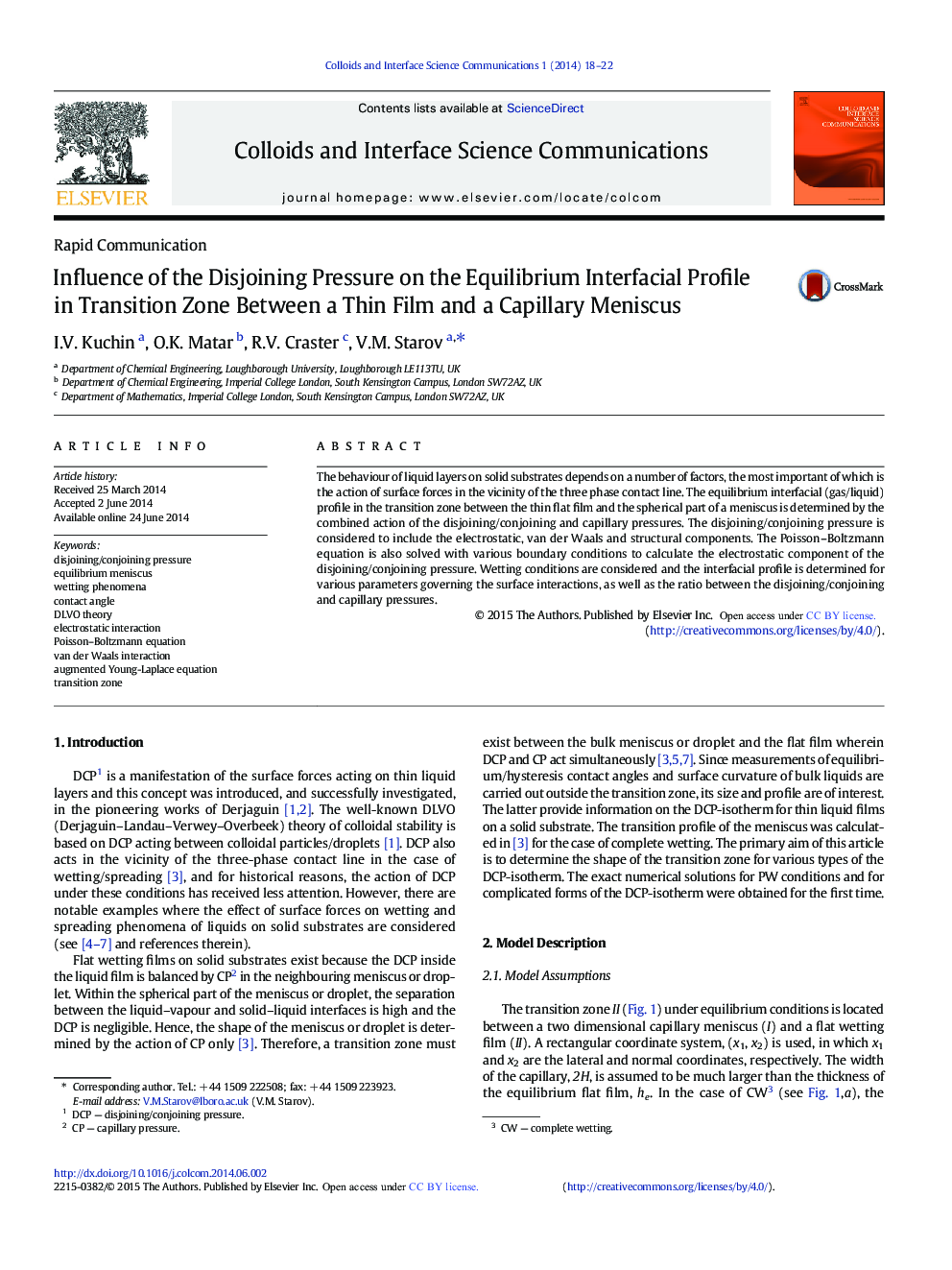| Article ID | Journal | Published Year | Pages | File Type |
|---|---|---|---|---|
| 591418 | Colloid and Interface Science Communications | 2014 | 5 Pages |
•Equilibrium interface profile in transition zone for a capillary meniscus is modelled.•The profile shape is determined by joint action of disjoining and capillary pressures.•The position of the transition zone depends on the contact angle value.•Structural interaction gives the transition zone position in front of meniscus.•The electrostatic interaction contribution is analysed for dissimilar surfaces.
The behaviour of liquid layers on solid substrates depends on a number of factors, the most important of which is the action of surface forces in the vicinity of the three phase contact line. The equilibrium interfacial (gas/liquid) profile in the transition zone between the thin flat film and the spherical part of a meniscus is determined by the combined action of the disjoining/conjoining and capillary pressures. The disjoining/conjoining pressure is considered to include the electrostatic, van der Waals and structural components. The Poisson–Boltzmann equation is also solved with various boundary conditions to calculate the electrostatic component of the disjoining/conjoining pressure. Wetting conditions are considered and the interfacial profile is determined for various parameters governing the surface interactions, as well as the ratio between the disjoining/conjoining and capillary pressures.
Graphical abstractFigure optionsDownload full-size imageDownload as PowerPoint slide
